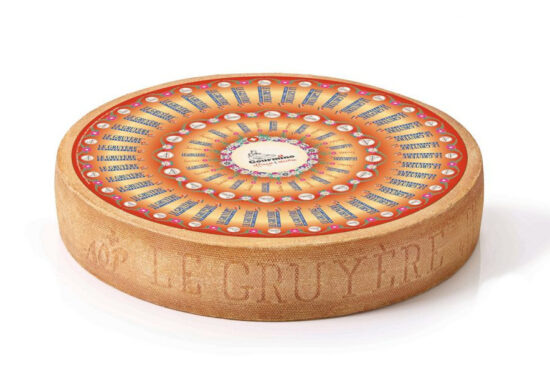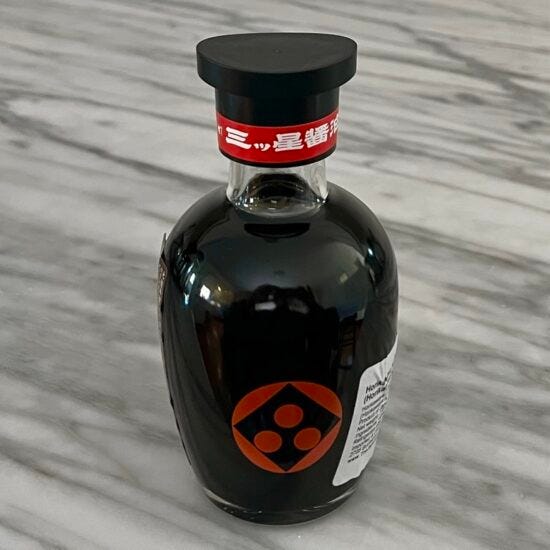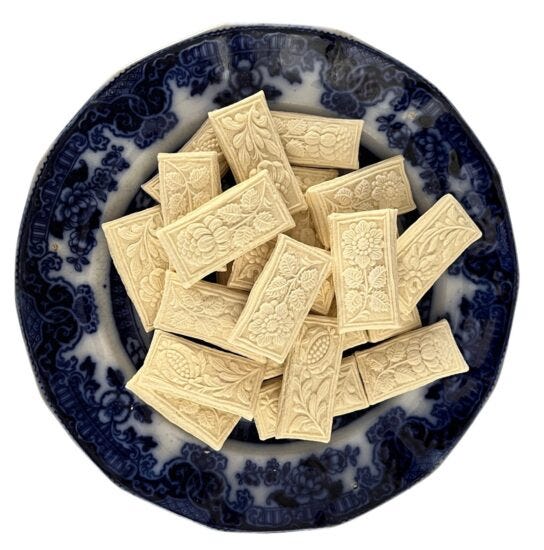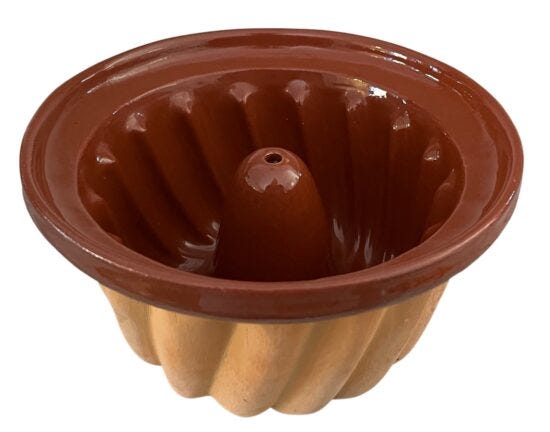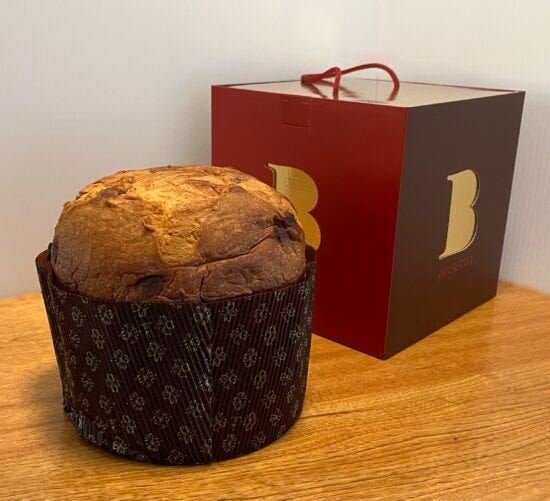A piece of fine aged Gruyère — what could be more satisfying to a tyrophile than a fine example of this great classic? A sound choice is the surchoix (12-month-old) Gruyère from Gourmino, an affineur and selector of cheeses that’s owned by the dozen small dairies that make the cheeses (their milk comes from herds of no more than 25 cows). The group includes more than one maker of Gruyère, and if you’re lucky, your seller will have a wheel from Bergkäserei Fritzenhaus, the Spycher family’s mountain dairy in the Emmental region of Switzerland. Michael Spycher, the cheesemaker in this instance, is a three-time World Cheese championship winner for Gruyère (the only three-time winner). Gourmino Gruyère comes in three levels of maturity: the milder six-month is more for cooking and everyday; then there are the surchoix and the less-common réserve at 15 months and up. Gourmino Gruyère is at the counter of certain good sellers. Online from Bklyn Larder, to cite one source, the surchoix is $34 a pound plus shipping.
Vollkornbrot — a loaf of rye meal, rye flour, sunflower seeds, and rye starter —goes very well with that Gruyère. The skilled Vollkornbrot from Zingerman’s in Ann Arbor, Michigan, could fill a salient gap in the repertoire of your local bakery (where, if you do spot a real rye loaf, caraway too often distracts from the essential rye taste). With Vollkornbrot, freshness is not much of an issue, because once it’s baked, it should rest for 48 to 72 hours, for reasons of texture and flavor. And after that it keeps well, needing only to be wrapped in plastic to slow the drying and refrigerated for good measure. Zingerman’s ships its Vollkornbrot in a paper bag (inside a box), the appropriate covering at that point. Ignore the instructions printed on the bag, aimed at crustier kinds of bread, to warm the loaf before eating — mere warmth makes the bread gummy. Brad Hedeman of Zingerman’s made multiple experiments in response to my query and concluded that with Vollkornbrot the best tactic is to toast a thin slice, which makes perfect sense. The toasted slice then begs to be completed with a generous smear of butter, smoked fish, cured meat, or cheese young or old. A 2-pound loaf from Zingerman’s is $12 plus shipping.
Soy sauce from Horikawaya Nomura could be ideal for someone who (like me) always meant to pay closer attention. Keisuke Nomura is the 18th-generation head of the company, which has ten employees and is located in Wayakama Prefecture, the birthplace of soy sauce. The company’s Edo-period storehouse has been designated a national Tangible Cultural Property, and its methods and choice of equipment are unchanged from the 1600s (see photos). For 200 ml of Mitsuboshi soy sauce in an ovoid glass bottle topped with an efficient dispenser (never say “dripless,” but it seems to be true), the cost is $35 from the discriminating Japanese Pantry. Or jump to the 900-ml size in a more mundane bottle with a humbler cap (a refill if that’s someone’s rate of use), which goes for $73.
A selection of single-country Labooko chocolate, from Zotter in Austria, would have broad appeal. Zotter is known for its novel flavor combinations, but it’s also a superior bean-to-bar maker. There are options from more than a dozen countries in varied chocolate percentages; bars rising over 75 percent are increasingly intense, not a mistake but more challenging to taste all their details. I’ve recently liked Belize, Guatemala, Haiti, Madagascar, Peru Chuncho (the latter refers to a group of native cultivars), and São Tomé, and as a point of contrast you could add the 2023 Opus 5 blend of cacao from five countries. Each 70-gram packet (two bars) is $8.49 plus shipping from the Zotter US site.
Handmade Springerles from a New Hampshire bakery, with their typical strong anise flavor, are aimed at those who love them. They’re ivory-colored, 1¼-by-2½-inch rectangles, pressed into molds decorated ultra-tastefully with flowers. In texture, they’re almost crunchy outside and soft within, a result of being partly dried before baking and matured afterward. A package of 20, in a homey gift box, is $30 plus shipping from Lil Jo Bake Shop.
A 15-inch wooden spoon, depending on the size of your recipient’s pots, might be more aspirational than practical, but there are shorter spoons, too, or you could hedge and give a trio of 10-, 12-, and 15-inch. Andrew McCarn, a young North Carolina woodworker, makes them in maple and other woods under the name Carolina Grain Co. The bowls of the spoons are deep and the handles are substantial. All the wood, he says, comes from within five miles of his home; he’s the one with the chainsaw and he does the milling. Ordering is through Etsy, where a 15-inch spoon is $38 plus shipping.
Babette’s Table Dry-cured sausage in Vermont might be the quickest present to disappear. It’s the real thing — one test is that it doesn’t need refrigeration, although I won’t go so far as to recommend that. (You can read a lot about cured sausage here.) Erika Lynch of Babette’s Table uses savory pork from several small Vermont farms to make her saucisson sec, finocchiona, and spicy sopressata. Each weighs about a third of a pound and costs about $16. The sausages are sold at a number of small shops in Vermont and a scattering of shops elsewhere in the US; an online source is Mad River Taste Place in Waitsfield, the town where the sausages are made.
A handmade earthenware kugelhopf mold from Poterie Friedmann in Soufflenheim in Alsace is the real thing for baking a kugelhopf, the region’s classic brioche. The mold is never washed but only wiped with a damp cloth. With a new one, before first use, the usual advice is to coat the interior with butter and bake it for a short time in a low oven. I did that for 30 minutes at 225 degrees F (100 degrees C), and there was no obvious transformation, but there’s been no sticking. (For a possible accompanying gift, see next item, and for another, consider a bottle of late-harvest Alsace wine, the ideal drink to accompany the cake. That’s not an item on this list because Alsace is never in fashion in the US, and specific wines are hard to track down, although the impeccable producer Zind-Humbrecht seems to be better distributed.) You can order a kugelhopf mold directly from Poterie Friedmann, and, in North America, an approximately 7.5-inch (19-cm diameter) mold is $43.80 plus shipping from Pastry Chef’s Boutique in New Jersey.
A bottle of Alsace eau-de-vie makes an excellent digestif, such as after a big holiday meal, and a little is used to soak the raisins for a kugelhopf. The region’s eaux-de-vie are distilled from a wide range of wine grapes and other fruit, but like Alsace wines, they’re somewhat sparsely available in the US. Nonetheless you might turn up a bottle of Trimbach Kirsch Grande Réserve, which recently was clean, even fresh, only subtly cherry flavored but extremely good; a 750-ml bottle goes for around $50. Or you might find the finer and more costly Massenez, Metté, or Miclo.
Panettone Biasetto from Italy could be really on the mark if your recipient is a pastry lover who will never ever personally bake anything. This particular panettone is on the highest level: aromatic and refined, deeply buttery, tender, hugely superior to any mass-produced kind. The style is Milanese, although Pasticceria Biasetto is in Padova. The box alone prompted this response on arrival: “Now that’s a gift!” A one-kilo panettone is $60 plus shipping from the discriminating Gustiamo. ●






